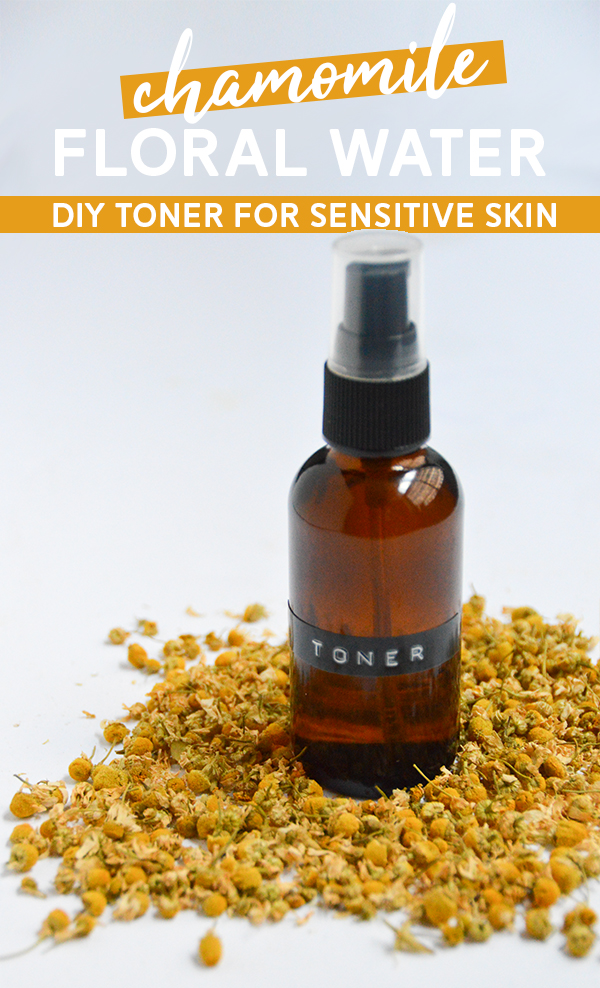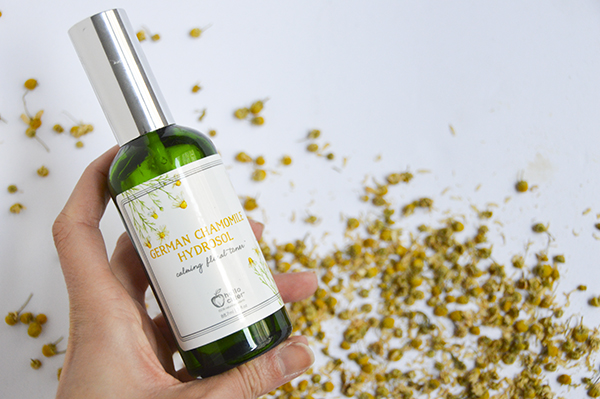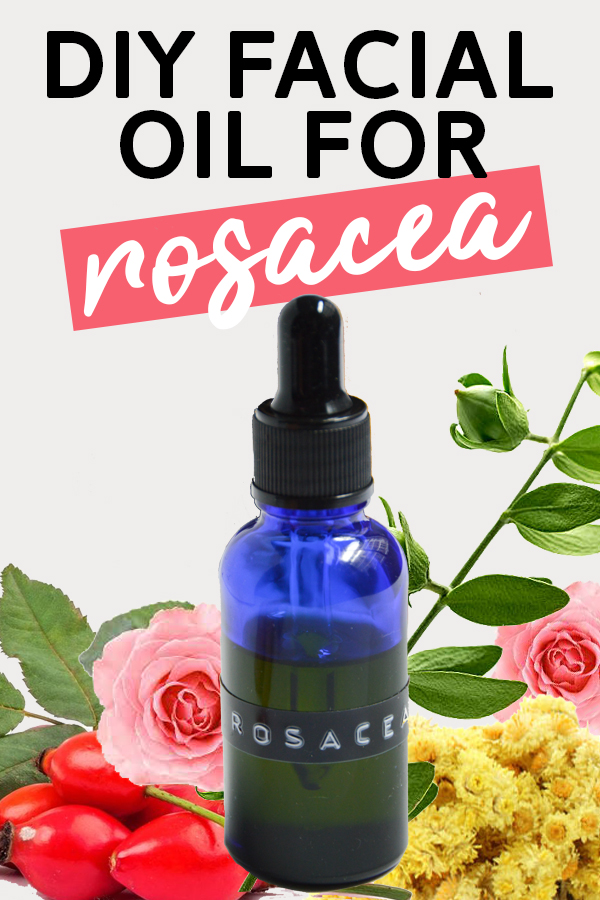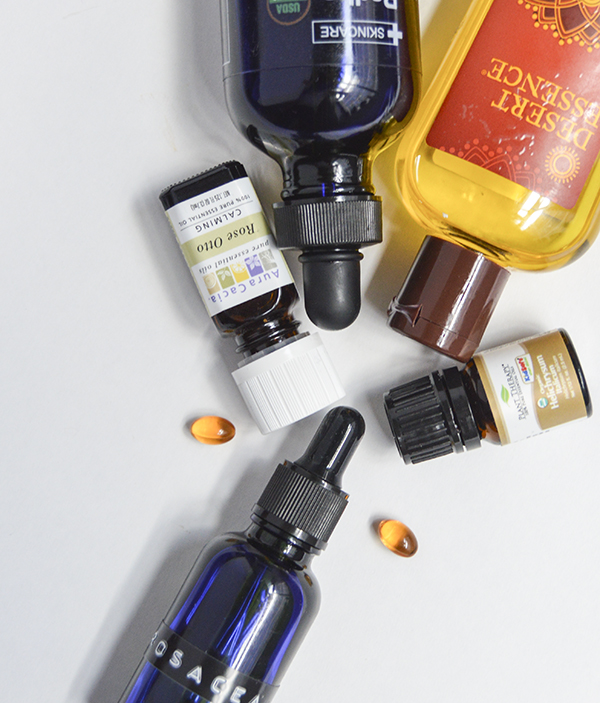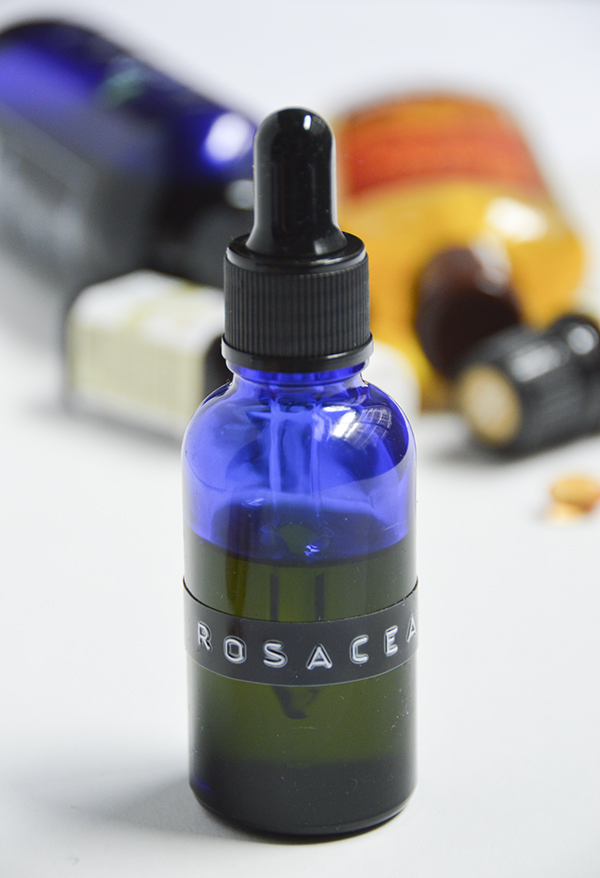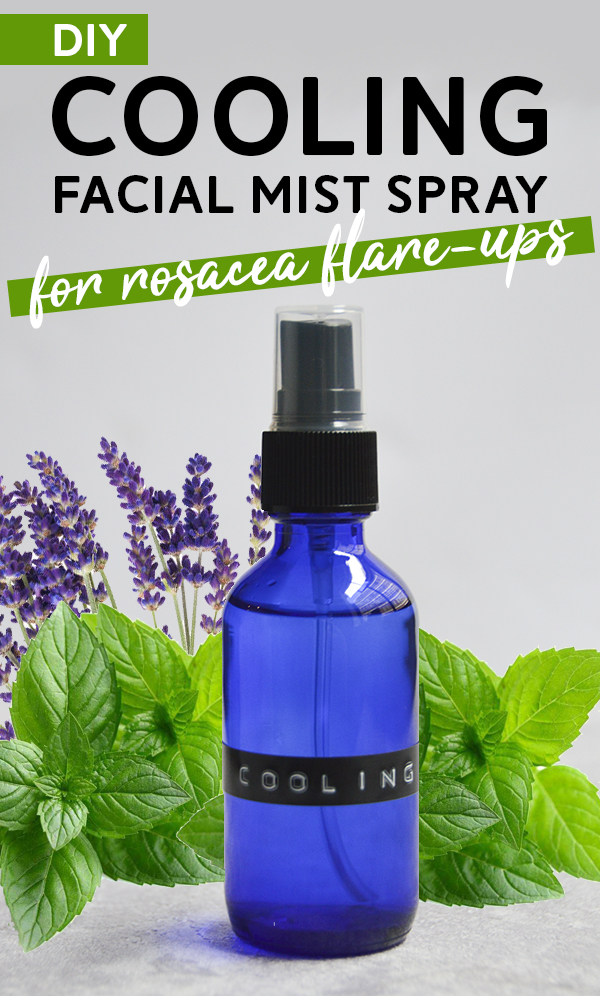
This is the fourth and final post (for now, anyway) focusing on rosacea. I’ve covered my experience and how essential oils can help rosacea; shared the facial oil blend I personally use for it; and shared a chamomile toner that’s great for rosacea and sensitive skin in general. To round it up, here’s the cooling facial mist spray I use for rosacea flare ups.
Before we get to it, I want to remind you that I am a Certified Aromatherapist, not a doctor. I 100% stand by aromatherapy as a complementary therapy for skin issues like rosacea, but the information in this post is not intended to replace advice from your dermatologist.
How This Cooling Facial Mist Can Help Rosacea Flare Ups
As we covered in the first post of this series, rosacea is primarily caused by poor elasticity in capillary walls. So what’s happening during a flare-up is that blood is rushing to the face and capillary walls are expanding in response. Because they’re not sufficiently elastic, however, they’re not properly contracting again to their original size or shape. This results in distended capillary that are holding blood cells and giving the red appearance on your face.
Peppermint Hydrosol (or Essential Oil)
Peppermint essential oil was chosen for this cooling facial mist because it cools by constricting the capillaries. Exactly what we want during rosacea flare ups! Now Peppermint can be a skin irritant if used in a strong dilution for any skin type, so we want to include it in the cooling mist, but never at a dilution of more than 1%. And while we’re on the topic of safety, Peppermint should be avoided if pregnant/lactating or if you have a history of epilepsy or cardiac fibrillation. Also you shouldn’t use on kids under the age of 2 (menthol vapor can inhibit respiration in young kids).
To get a low concentration of Peppermint in our cooling mist, we can either use a small number of drops of essential oil or we can opt for a Peppermint hydrosol instead of the oil. I’ve tried both and will include blend recipes for both below. If you have really sensitive and easily irritated skin, I’d strongly suggest skipping the essential oil and using Peppermint hydrosol instead. A hydrosol is the water produced during the steam distillation of Peppermint plant. It contains water-soluble fragrance molecules and only a very small amount of essential oil.
Lavender Essential Oil
Lavender essential oil is included in the cooling mist blend as well. It’s a gentle oil that’s safe for pretty much all skin types. It’s great for any inflammation of the skin, and is an adaptogenic oil, meaning it can both increase and decrease certain skin functions to normalize the skin based on individual need. In other words, it’s a balancing oil. I did a whole post on lavender essential oil if you want to learn more.
Aloe Vera
Aloe vera gel is cooling and anti-inflammatory. Because we’re making a spray, you want to make sure it’s not chunky when you add it to the blend. I peel one side of the skin off a piece of aloe plant and then press the gel through a strainer into a bowl to achieve this.
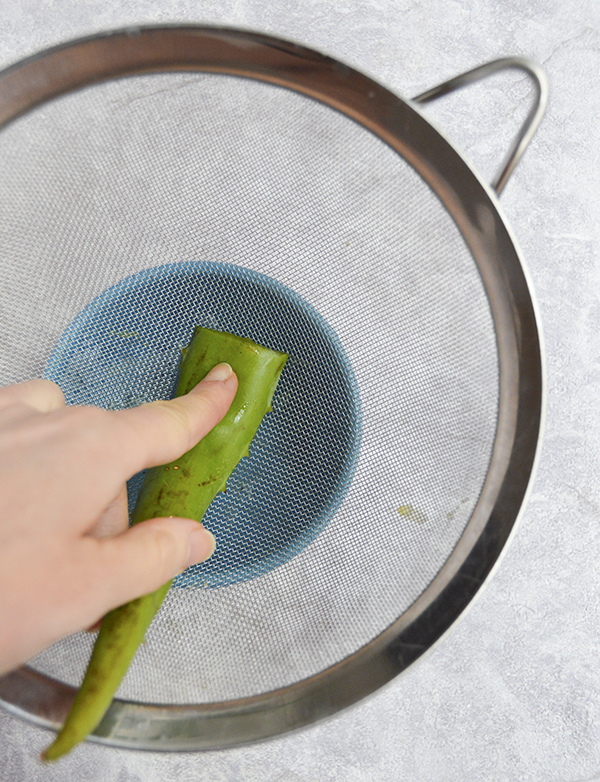
You could stop there with your cooling facial mist: peppermint hydrosol, aloe vera and lavender essential oil. In the below recipe, you’ll see I do add in one more essential oil. I personally use Helichrysm, but any of the essential oils I’ve listed for rosacea will work. If you already use a facial oil blend and have found an oil that works particularly well for your skin, use that. Top three I’d recommend choosing from are Helichrysm, German chamomile and Rose essential oils.
DIY Cooling Facial Mist for Rosacea Flare Ups
Links in this section are mostly to Plant Therapy products (via Amazon), a brand of essential oils I personally use and recommend. They’re affiliate links. For other brands I recommend, check out this post.
Ok so building off the previous section, here’s the base of our cooling mist for rosacea flare ups:
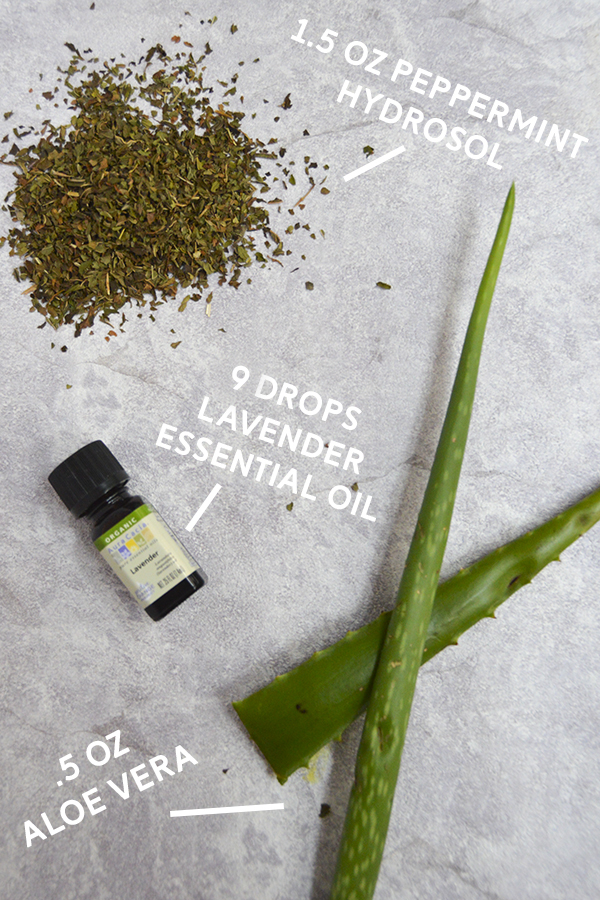
I’ll go into ways to tweak it to fit your personal skin needs and preferences, but first here’s the exact blend recipe I use:
- 1.5 oz (3 tbsp) Peppermint hydrosol
- .5 oz (1 tbsp) Aloe vera
- 9 drops Lavender essential oil
- 3 drops Helichrysm essential oil (can use German chamomile, rose or another rosacea-friendly oil of choice)
You can make your own Peppermint hydrosol at home using the process I outlined in this post (just replace chamomile with peppermint). Or you can just buy it. If you do make your own, do so in a well ventilated room. The peppermint aroma and menthol vapor can be very overpowering and even irritating.
Especially if you have sensitive skin, it would be prudent to do a skin patch test before incorporating an oil into your blend. You can learn more about skin patch testing and essential oil safety here. Peppermint (and most essential oils) will irritate your eyes, so be sure to close them before misting the spray over your face. That probably goes without saying!
For an added cooling effect, I like to store my facial mist in the refrigerator. If you tend to experience rosacea flare ups after working out, pack it in your gym bag! Be sure to shake your blend before spritzing over your face.
Alternative Blend Options
If you don’t want to make or buy peppermint hydrosol, but you have peppermint essential oil on hand, you can adjust the above blend recipe as follows:
- 1.5 oz (3 tbsp) distilled water
- .5 oz (1 tbsp) aloe vera
- 6 drops Lavender essential oil
- 3 drops Peppermint essential oil
- (optional) 3 drops German chamomile, Helichrysm or Rose essential oil – if you omit this, do 9 drops of Lavender instead of 6
In a pinch, you could also add 1 drop of peppermint essential oil to a quarter-sized dollop of aloe vera gel and smooth the gel over your face. If peppermint is too intense for your skin, do a drop of lavender essential oil in the aloe vera instead.
Other Considerations for Helping Rosacea Flare Ups
Having something on hand to help with rosacea flare ups is great, but you also want to figure out what’s triggering them in the first place. Some common rosacea triggers include:
- Sun exposure
- Extreme hot/cold weather or rapid change in temperature
- Stress/anxiety
- Consumption of spicy foods
- Intense exercise
- Alcohol
- Tobacco
Pay attention to what you’re doing/consuming/feeling prior to a rosacea flare up. Identifying your triggers and then avoiding them (within reason) is one of the best things you can do for your skin condition.
Currently for me, the most common trigger of a rosacea flare-up is emotion. If I get upset, anxious, or even just really excited—I feel that uncomfortable heat start building in my cheeks and I know what’s coming. This cooling mist spray is great, but I may tweak it and replace the peppermint with a more emotionally calming essential oil to help with the feelings that commonly trigger my flare ups in the first place. I’ll of course keep you posted throughout this process!
xo Nicole
The statements and blends referenced in this post have not been evaluated by the Food and Drug Administration. Products and/or information are not intended to diagnose, treat, cure or prevent any disease. If you are pregnant, nursing, have a medical condition or are taking any medication, consult with your physician before using any essential oil or blend.
I’m a Certified Holistic Aromatherapist through the Institute of Integrative Aromatherapy and only share blends with you that I’ve personally used and from which I’ve benefited. I stand behind them 100%! That being said, essential oil blends are most effective when made with individual needs, goals and personality in mind.
